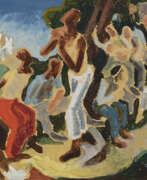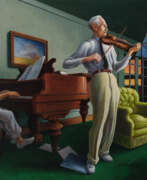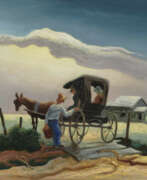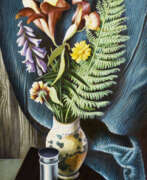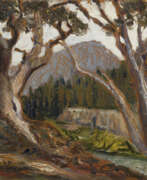Regionalism

Regionalism
Regionalism was an American realist modern art movement that flourished during the 1930s, capturing the essence of rural life and small-town America, particularly in the Midwest. This movement was a form of American modernism that countered European abstract art with the realist depiction of everyday scenes, reflecting the nation’s agrarian roots and societal values.
Grant Wood, Thomas Hart Benton, and John Steuart Curry led the Regionalism movement, creating iconic works like Wood’s “American Gothic” and Curry’s “Baptism in Kansas”. These artists, despite having studied in Europe, returned to depict the American scene with a sense of nationalism and romanticism. The movement served as a reaction against the modern trends of the time, promoting a uniquely American style of art that was accessible and narratively rich.
The Great Depression played a significant role in the development of Regionalism. Artists like Wood argued that this period was beneficial for American art, as it encouraged artists to draw inspiration from their nation rather than Europe. This patriotic approach to art was seen as a way to reassure and uplift the public during tough economic times.
Notably, Regionalism’s impact extended beyond the canvas, influencing popular culture, children’s book illustrations, and even advertisements. The movement's decline came post-World War II, as the art world shifted towards Abstract Expressionism. However, the legacy of Regionalism endures, providing a historical snapshot of America’s past and influencing various cultural domains.
For those with a keen interest in the intersection of art, history, and culture, Regionalism offers a rich tapestry that portrays the American experience through a distinctive and empathetic lens. As a collector, auctioneer, or art expert, understanding Regionalism is essential to grasp the narrative depth and societal context embedded within American art from this period.
To dive deeper into the world of Regionalism and to receive updates on new sales and auction events related to this pivotal art movement, consider signing up for specialized updates. This will ensure you stay connected to the pulse of Regionalist art and its ongoing influence within the world of collectors and beyond.
| Country: | USA |
|---|---|
| Start of the period: | 1930 |

